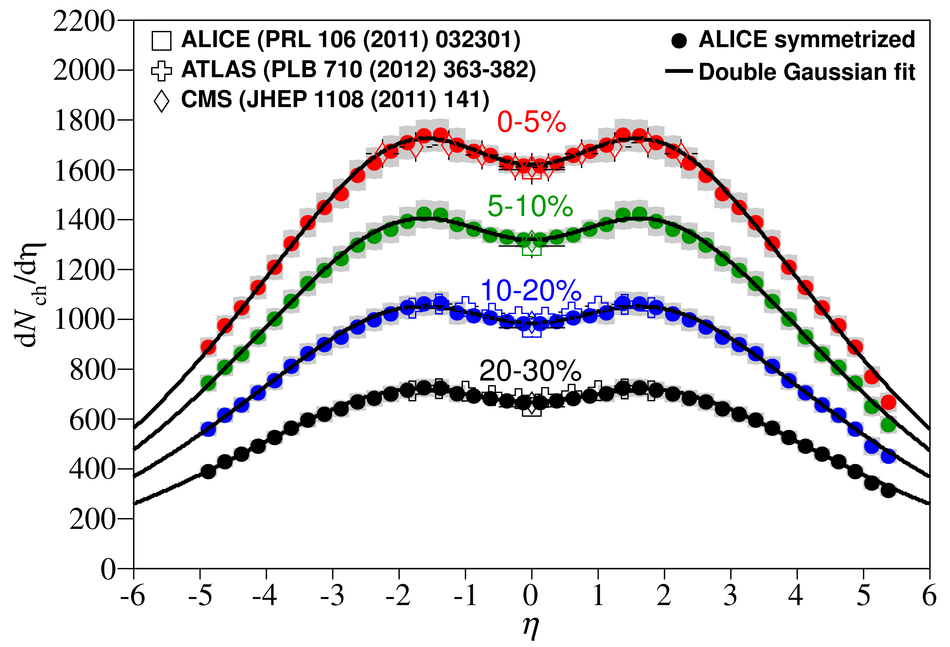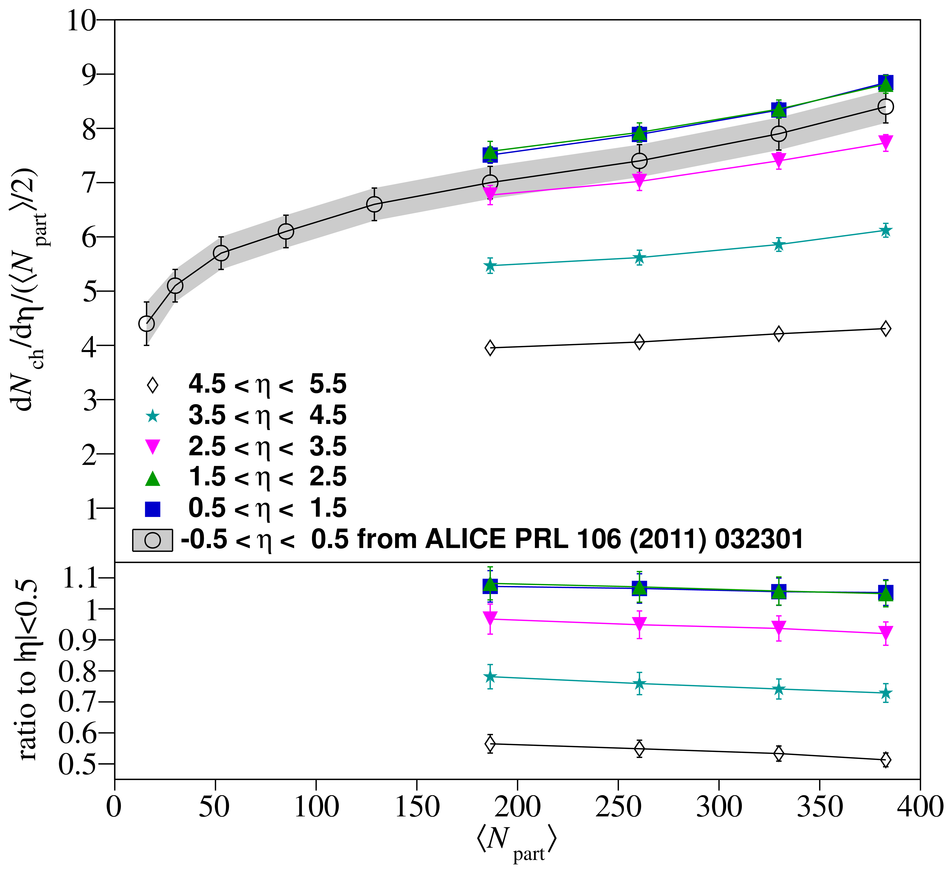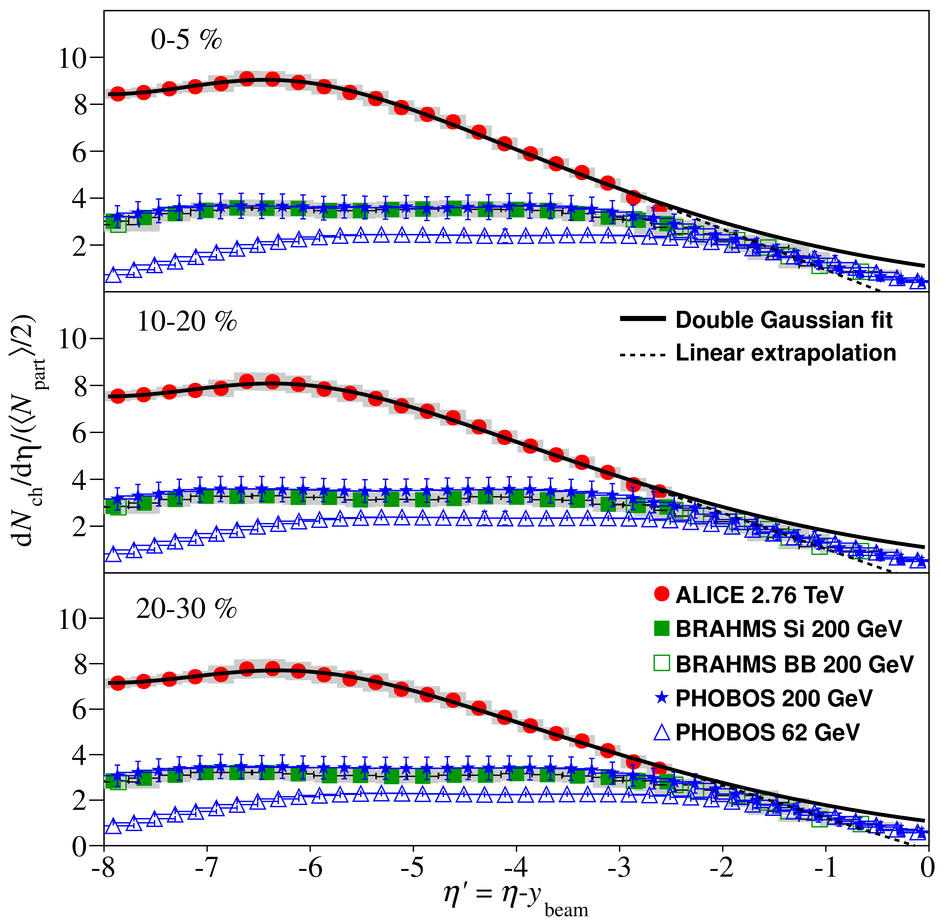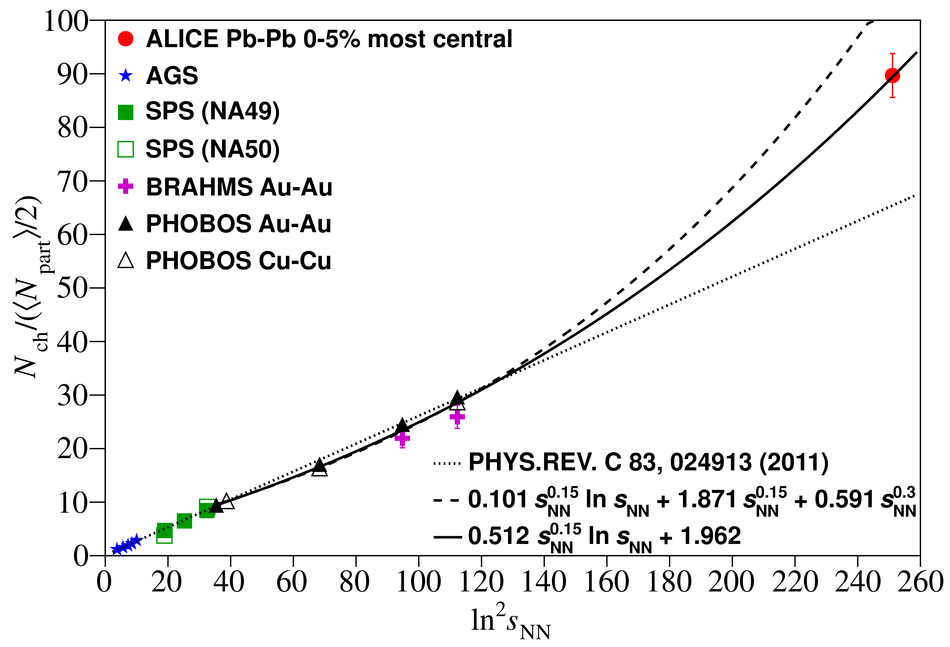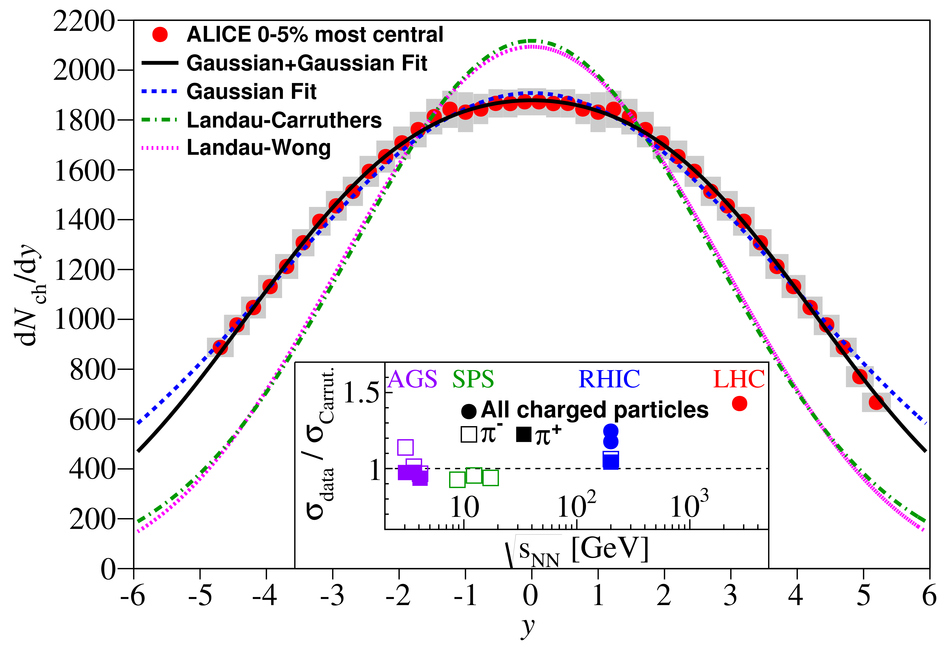We present the first wide-range measurement of the charged-particle pseudorapidity density distribution, for different centralities (the 0-5%, 5-10%, 10-20%, and 20-30% most central events) in Pb-Pb collisions at $\sqrt{s_{\rm NN}} = 2.76$ TeV at the LHC. The measurement is performed using the full coverage of the ALICE detectors, $-5.0 < \eta < 5.5$, and employing a special analysis technique based on collisions arising from LHC "satellite" bunches. We present the pseudorapidity density as a function of the number of participating nucleons as well as an extrapolation to the total number of produced charged particles $N_{\rm ch} = 17165 \pm 772$ for the 0-5% most central collisions). From the measured ${\rm d}N_{\rm ch}/{\rm d}\eta$ distribution we derive the rapidity density distribution, ${\rm d}N_{\rm ch}/{\rm d}y$, under simple assumptions. The rapidity density distribution is found to be significantly wider than the predictions of the Landau model. We assess the validity of longitudinal scaling by comparing to lower energy results from RHIC. Finally the mechanisms of the underlying particle production are discussed based on a comparison with various theoretical models.
Phys. Lett. B 726 (2013) 610-622
HEP Data
e-Print: arXiv:1304.0347 | PDF | inSPIRE
CERN-PH-EP-2013-045



